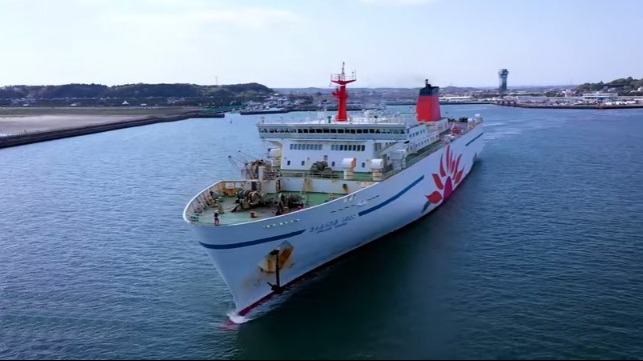Video: Japanese Demonstration of Autonomous Docking System

A Japanese project to develop an autonomous docking and system for commercial vessels recently completed demonstration testing as the next step in the program. It was the first time the system was tested using a large passenger ro-ro ferry on its service route and at a pier.
Selected by Japan's Ministry of Land, Infrastructure, Transportation and Tourism (MLIT) in August 2018 as part of its autonomous vessel demonstration project, the goal was to identify the technical issues required for auto berthing and un-berthing and demonstrate autonomous operation with a real vessel. The team, which consists of Mitsui E&S Shipbuilding Co., Mitsui O.S.K. Lines, Tokyo University of Marine Science and Technology, Akishima Laboratories (Mitsui Zosen), and MOL Ferry Co., is also studying ways to achieve practical use.
During a series of tests in March and April 2021, the 11,400 gross ton ro-ro passenger car ferry Sunflower Shiretoko, owned by MOL Ferry, auto berthed and sailed from a pier in Oarai Port, Ibaraki Prefecture.
The project team developed the ship operation plan and operation guide, as well as establishing criteria for canceling the test. They also used simulations to conduct a thorough safety assessment under various conditions.
When the project was announced, the team explained that berthing and un-berthing are some of the most difficult phases of ship operation, in which they believed autonomous operations would be of great benefit. Human errors they said account for 80 percent of all marine accidents. In addition to the potential to significantly reducing human error, they noted that autonomous operations held the potential to reduce the workload for mariners, which could address the shortage of qualified seafarers.
Between December 2018 and February 2019, the team conducted its first set of tests using the TUMST training ship Shioji Maru. A total of 54 auto berthing operations were conducted using a virtual pier in the open water. They reported that they had gained useful information that would be used to address issues including developing appropriate maneuvering controls as well as the considerations for vessel speed, course, and distance required for a sufficient safety margin. They were also working to definite the criteria for making decisions to continue/stop on auto operation considering machinery and equipment failures that might occur during auto operations as well as sudden changes in surrounding environmental conditions.
In the next phase of the program, the team expects to leverage the results from the tests on the ferry to conduct demonstration tests of auto berthing and un-berthing at actual berths with other ship types. The goal is to develop a highly versatile technology to meet the ministry’s goal of commercial applications of autonomous vessels by 2025.
